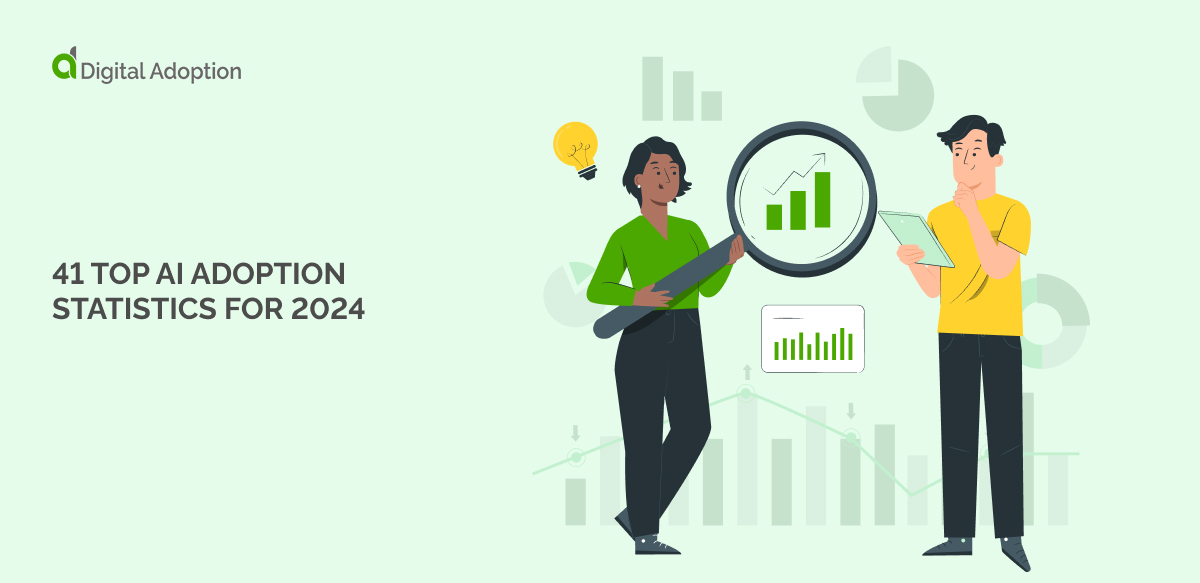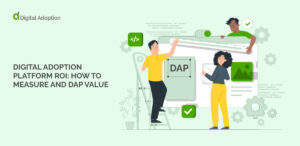While every organization jumping on the AI-driven digital transformation train and moving quickly, the ride differs from what many expected.
Gartner predicted the creation of 2.3 million new roles from automation by 2019. However, this figure was closer to 97 million.
The reason is that workforces are changing but not constantly reducing. AI adoption leads to creating and expanding new roles in the AI and machine learning specialist roles and movement of roles rather than simply eliminating more traditional roles.
Workforce satisfaction ratings for AI tools like Copilot are high, with 60-75% of developers reporting higher job fulfillment using Copilot. Automation allows developers working on enterprise technologies like custom CRMs to use technology to complete repetitive tasks.
The AI-augmented workforce is more willing to adopt AI than the expectations suggested.
This evolutionary workforce can focus on higher-level, more stimulating tasks, proving their visible value to their employer and helping their professional development and organization grow.
Our AI adoption stats reveal surprising insights into how organizations use AI and how employees view it. The key takeaway is that those who embrace AI will likely succeed, and many are already doing so.
Top AI adoption statistics
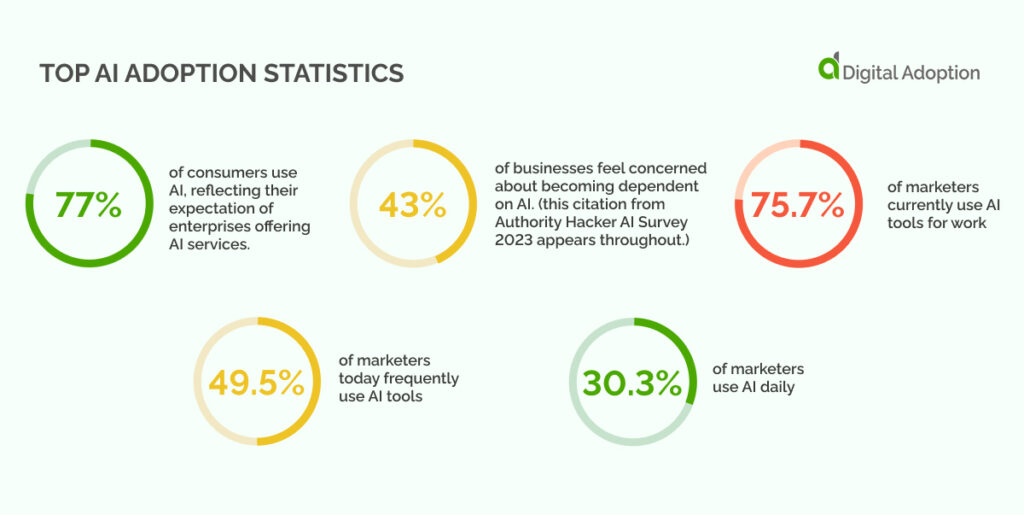
The top AI adoption statistics show how enterprises have responded to the AI adoption trend catalyzed by generative AI.
This section covers changing customer expectations and how many companies use AI daily.
- 77% of consumers use AI, reflecting their expectation of enterprises offering AI services.
- 43% of businesses feel concerned about becoming dependent on AI. (this citation from Authority Hacker AI Survey 2023 appears throughout.)
- 75.7% of marketers currently use AI tools for work.
- 49.5% of marketers today frequently use AI tools.
- 30.3% of marketers use AI daily.
AI adoption market size and growth rate
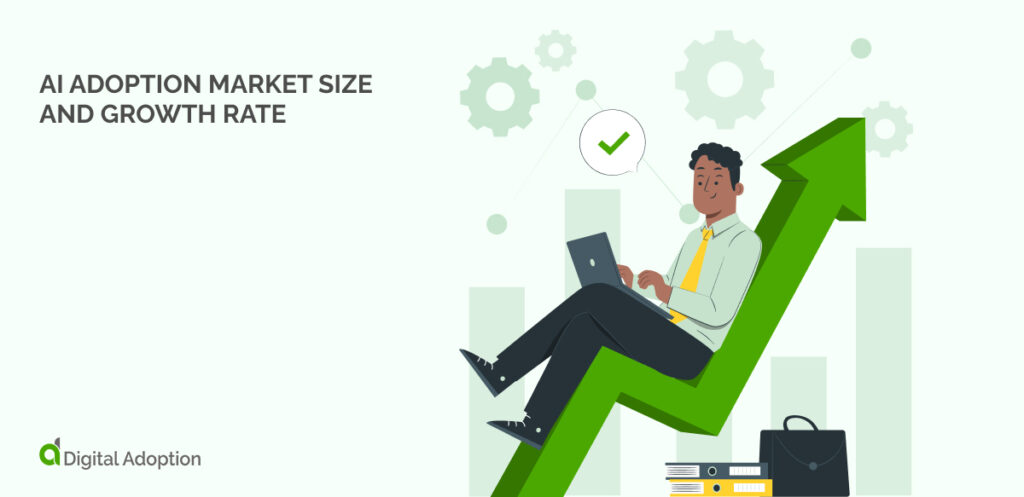
AI adoption has been growing for decades but has seen a spike in progress thanks to generative AI tools. The market size of AI is likely to grow more as companies race to adopt new technologies to outcompete each other.
- Global AI private investment was $91.9 billion in 2022, representing a 26.7% decrease since 2021. (this citation from the Stanford AI Index Report 2023 occurs throughout)
- In 2022, the US invested $47.4 billion invested into AI technologies.
(Precedence Research)
- Authorities on AI valued the global artificial intelligence (AI) market at USD 454.12 billion in 2022.
- The global artificial intelligence (AI) market will reach around USD 2575 billion by 2032.
- North America had the largest market share of AI in 2022, at 36.8%.
- Europe had the second-largest market share of AI in 2022, at 24.97%.
- The Asia Pacific region held the third-largest market share of AI in 2022, at 23.9%.
AI marketing popularity statistics by platform
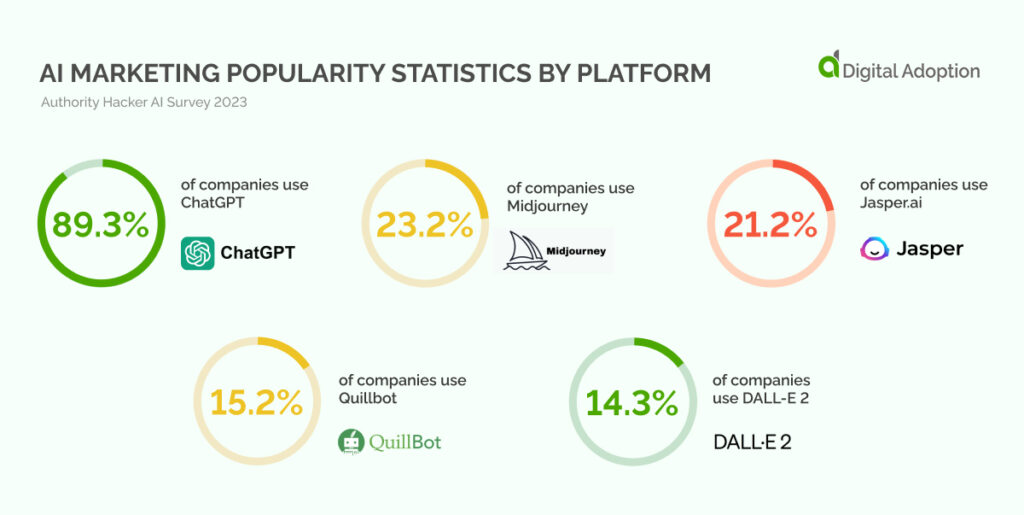
Everyone has heard of ChatGPT, the tool that started the generative AI trend that influences many processes today. But it’s essential to consider what other platforms are popular to ensure you don’t get left behind and have every tool you need for any task.
(Authority Hacker AI Survey 2023)
- 89.3% of companies use ChatGPT.
- 23.2% of companies use Midjourney.
- 21.2% of companies use Jasper.ai.
- 15.2% of companies use Quillbot.
- 14.3% of companies use DALL-E 2.
AI adoption statistics by use case
AI has a broad range of use cases, making it a versatile tool with applications for nearly every industry. Use cases most commonly involve writing, image generation, and a smaller number of other purposes.
(Authority Hacker AI Survey 2023)
- 85.1% of companies use AI for article writing.
- 47.8% of companies use AI for copywriting.
- 34.7% of companies use AI for social media posts.
- 30.6% of companies use AI for image generation.
- 25.3% of companies use AI for email marketing due to the popularity of ChatGPT sales.
- 9.9% of companies use AI for other use cases.
(Stanford AI Index Report 2023)
- Companies invested USD 5.9 billion in AI for management, processing, and cloud in 2022.
- Companies invested USD 5.5 billion in AI for Fintech in 2022.
- The most common use case for AI adoption in 2022 was service operations optimization (24%).
Workforce impact of AI adoption statistics
The workforce impact of AI adoption statistics shows many predictable realities and more surprising outcomes. Despite many job losses, AI is beginning to fulfill and often exceed predictions of job creation as new skills are necessary to use new enterprise tools competitively.
(McKinsey)
- Automation may replace 30% of human enterprise tasks by 2030.
- 8.6 million occupational shifts occurred between 2019 and 2022.
- 12 million roles will require some form of transition by 2030.
(Stanford AI Index Report 2023)
- The average AI-related job postings have increased from 1.7% in 2021 to 1.9% in 2022.
(Github AI Report)
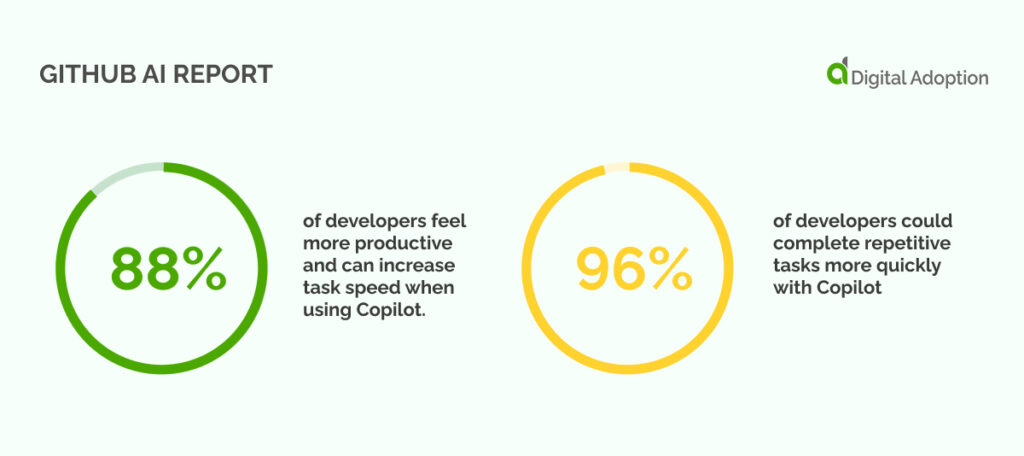
- 88% of developers feel more productive and can increase task speed when using Copilot.
- 96% of developers could complete repetitive tasks more quickly with Copilot.
Statistics for factors hindering AI adoption
Despite the fast progress of AI adoption, many factors hinder its evolution. Understanding these factors helps you to overcome them and enjoy the benefits of AI for your organization.
(Authority Hacker AI Survey 2023)
- Lack of knowledge for effective use: 45.2%.
- Lack of time for testing and implementation: 22.5%.
- AI accuracy concerns: 13.9%.
Workforce perceptions of AI adoption statistics
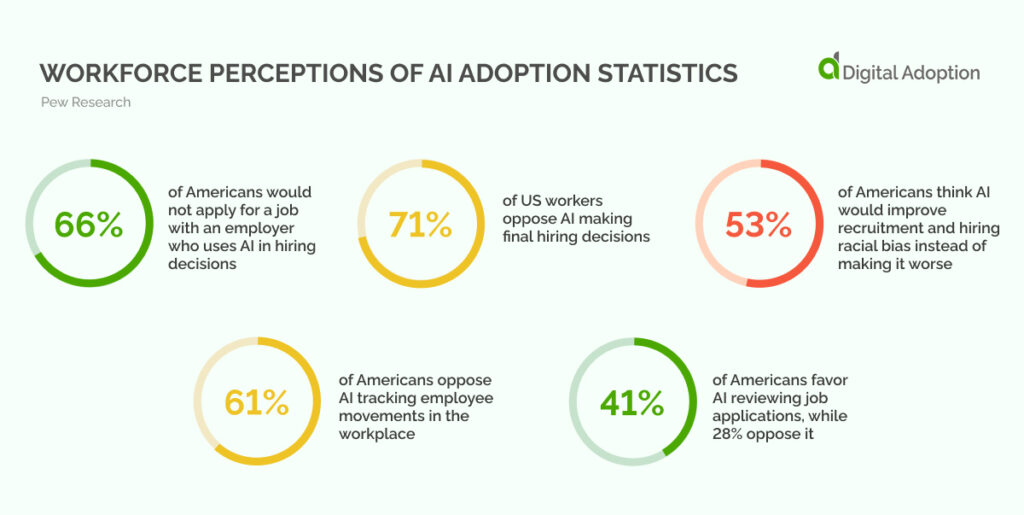
Workforce perceptions vary, but the results mainly indicate surprising results with more positive attitudes toward AI than expected. Overall, employees are comfortable with AI and feel it enhances their workflow but oppose its use within specific contexts, like final hiring decisions.
(Pew Research)
- 66% of Americans would not apply for a job with an employer who uses AI in hiring decisions.
- 71% of US workers oppose AI making final hiring decisions.
- 53% of Americans think AI would improve recruitment and hiring racial bias instead of making it worse.
- 61% of Americans oppose AI tracking employee movements in the workplace.
- 41% of Americans favor AI reviewing job applications, while 28% oppose it.
Interpret the statistics to follow AI adoption trends
These statistics paint a surprising picture of AI adoption. It’s not only enterprises adopting AI technologies to increase revenue but employees who are beginning to understand the advantages as they automate tasks to focus on work AI can’t do.
However, not all workforce perceptions of AI are positive. Many workers and candidates feel that, while AI is useful in helping them complete tasks, it should not be involved in final hiring decisions or excessively monitor workplace productivity.
AI adoption is likely to increase with time, but an obstacle to its progress may be workforce opposition when used in a way they feel is not human-centric.
Agile organizations and employers will come out on top as they accurately interpret AI trends and ensure they adapt their approaches to increase revenue and maintain long-term success.

 FACT CHECKED
FACT CHECKED